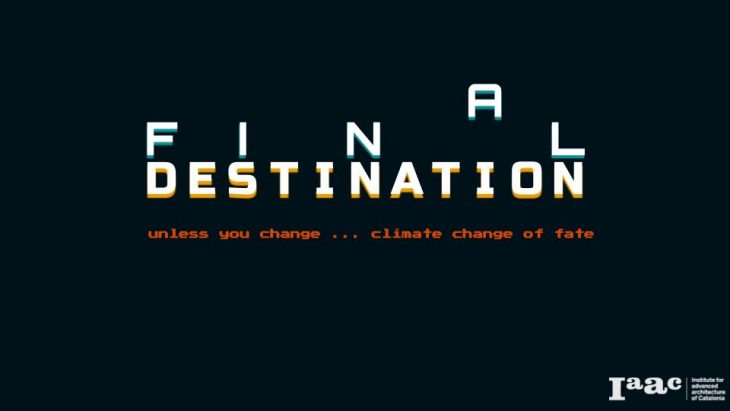
The United Nations announced that there is just over a decade to limit the effects of global warming. Climate change is a significant threat that has raised concerns all over the world. From shifting weather patterns to rising sea levels, the impact of climate change is global and at an unprecedented scale.
HAVE YOU WONDERED HOW BARCELONA WILL LOOK LIKE IF WE LOSE THE BATTLE?
If your answer was no, then FINAL DESTINATION will enable you to visualize the potential effects of climate change on the city of Barcelona.
FINAL DESTINATION is a virtual awareness campaign that focuses primarily on risk management to avoid or minimize the impact of climate change. The virtual reality experience enables the user to have an immersive experience of worst-case scenarios of the effects of climate on the metropolitan city of Barcelona. These scenarios are based on real projections and tackle Barcelona’s challenges in increasing temperatures, air pollution, and rising water levels.
STORY
Climate change is a ‘crisis multiplier’ that has profound implications on international well-being. Addressing climate change requires a coordinated global approach. Education is an essential element of the global response to climate change. It aids in increasing “climate literacy” among young people, encourages changes in their attitudes, and helps them adapt to climate change-related trends. Mixed Reality allows you to see and immerse yourself in the world around you even as you interact with a virtual environment using your own hands—all without ever removing your headset.
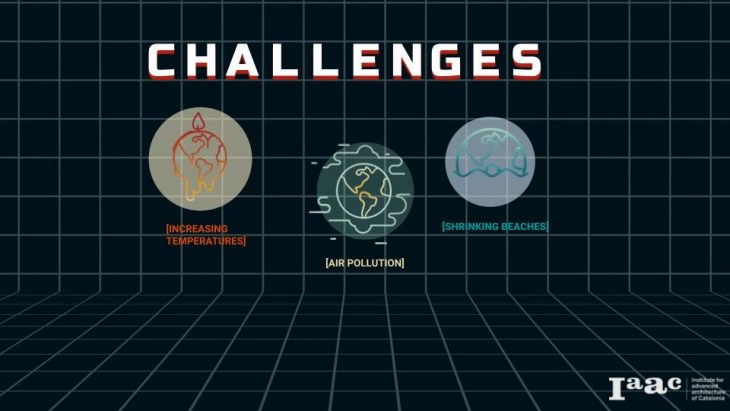
3 Challenges FINAL DESTINATION tackles
Increasing Temperatures
A heatwave is defined as the exceptional [increase in atmospheric temperatures], above the seasonal average and concentrated over a short period of time. The average air temperature of Catalonia increased by an average of 0.23°C [per decade] between 1950 & 2014. Daily maximum and minimum temperatures may rise by up to 1.5 °C & 3.5 °C [by 2050].

Average temperature increase per year in every season in Barcelona
Air Pollution
Wildfires can cause temporary large increases in outdoor airborne particles and substantial increases in gaseous air pollutants such as carbon monoxide, nitrogen dioxide, formaldehyde, and acetaldehyde. Rising up to [23 km] into the air, plumes of smoke from large wildfires can spread all over the globe thanks to currents of air. In 2019, [80%] of air quality monitoring stations in Barcelona exceeded the average annual NO2 limits set by the EU. in 2019 exceeded the 40 ?g/m3 limit set by the World Health Organization.
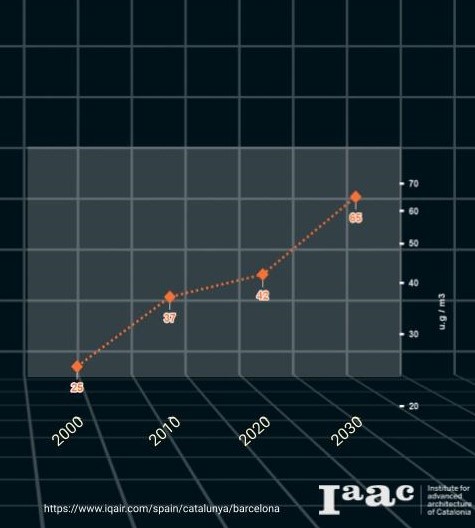
The average increase in air pollution per year in Barcelona
Shrinking Beaches
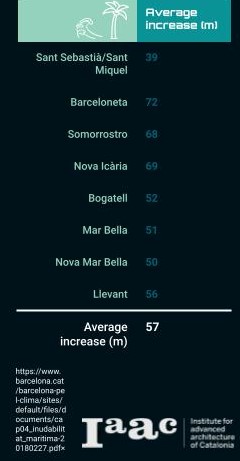
The average increase in sea level in Barcelona’s beaches
The sea level has risen by [3.9 cm/decade] since [1990]. According to a study released by the Municipality as an annex to its 2018 Climate Plan, [these rainfall pattern evolutions, combined with sea-level rise], might result in a [stormwater system fragility across the urban fabric] in [more than 10 years].
Route
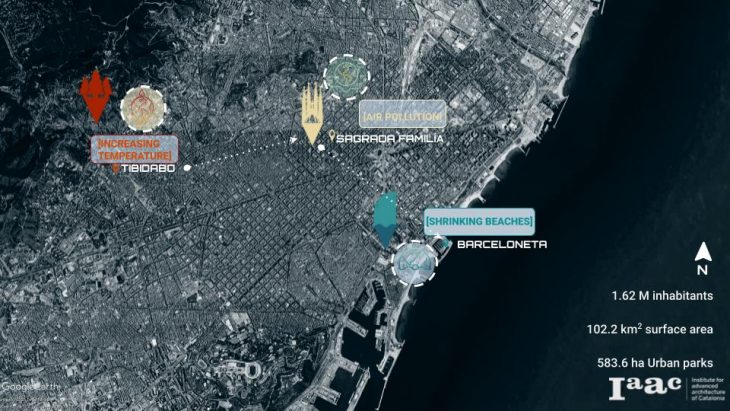
Route
User Journey
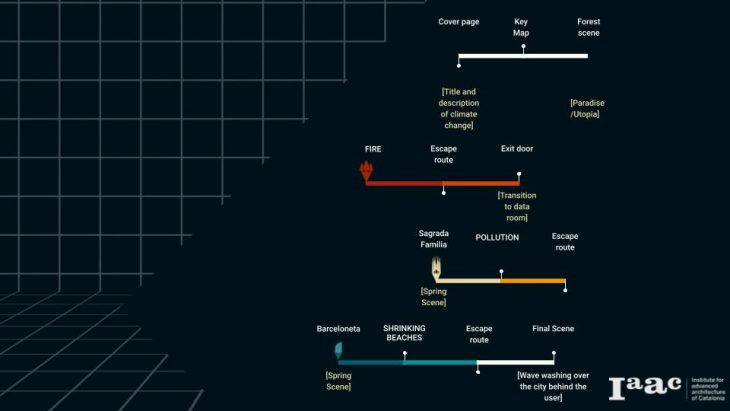
User Journey
![Scene 1: Tibidabo [Increasing Tempretures]](https://www.iaacblog.com/wp-content/uploads/2021/05/final-destination-4-730x411.jpg)
Scene 1: Tibidabo [Increasing Tempretures]
![Scene 2: Sagrada Familia [Air Pollution]](https://www.iaacblog.com/wp-content/uploads/2021/05/final-destination-6-730x411.jpg)
Scene 2: Sagrada Familia [Air Pollution]
![Scene 3: Barceloneta [Shrinking Beaches]](https://www.iaacblog.com/wp-content/uploads/2021/05/final-destination-8-730x411.jpg)
Scene 3: Barceloneta [Shrinking Beaches]
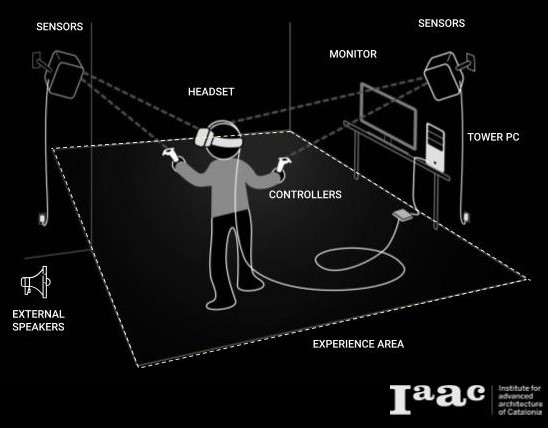
VR Set-up
FINAL DESTINATION is a project of IAAC, Institute for Advanced Architecture of Catalonia, developed at Master in Advanced Architecture in 2020/21 by Students Jihad Al Ojaili, Yasmine Chacour, and Pamela Inegbedion. Faculty Mery Glez & Gus Zúniga. Faculty Assistant Daniil Koshelyuk & Eve Nnaji.